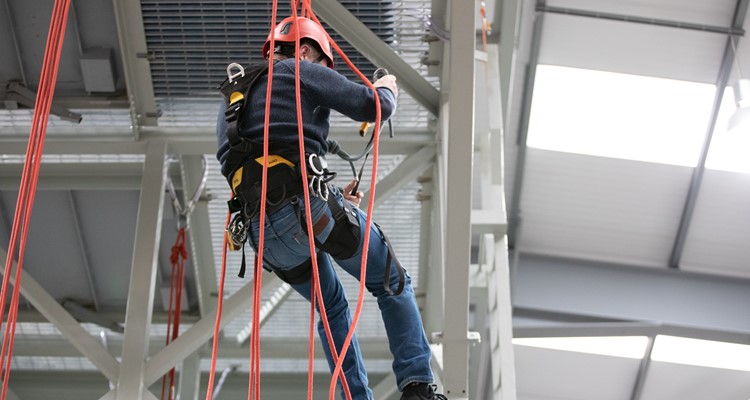#PowerUpYourCareer
Jack Gibson, lead rope access instructor at our Newcastle site, gives his top five tips on how to move up the rope access career ladder.
1. Rope access certs bolster your CV – rope access isn’t a career in itself, it’s simply a means of getting to the worksite whether this be on an offshore oil and gas platform doing maintenance, on a wind turbine fixing the blades or on the outside of an apartment block cleaning windows. If you have a trade such as welding, blasting, painting or rigging, rope access skills will enhance your CV and give you more flexibility in your chosen career. They are definitely a worthwhile addition.
2. Put the hours in - IRATA is the world’s leading organisation for training standards in the rope access industry and has three distinct training levels:
- IRATA Level 1 - for those with little or no experience
- IRATA Level 2 - for experienced rope access technicians with a focus on rigging and rescue work
- IRATA Level 3 - for very experienced technicians and supervisors responsible for a team of rope access technicians
Progressing up the levels requires pre-requisites. To get from Level 1 to Level 2 you need a minimum of one thousand hours on the job, which have been logged and signed off by a level 3 supervisor and a minimum of one year’s work experience. The same applies when moving from Level 2 to Level 3. So, you need to put those hours in before you can even think about coming on a course and progressing to the next level.
3. It’s not ALWAYS about the money – you should be very clear about your reasons for progressing your career. Rates of pay can vary across all levels and it doesn’t necessarily follow that Level 3 supervisors will be paid significantly more than a Level 2. Sometimes the difference can be as little as £2 per hour. When you consider the huge jump in responsibility some people may decide a Level 3 position simply isn’t for them, while others may welcome a new challenge and increased responsibilities.
4. Mix it up! – a key piece of advice I give to anyone looking to progress to the next level is to make an effort to gain work experience in various different areas of rope access. This ensures you experience lots of different industries, different equipment and different working methods. Different industries will involve different rescue plans, different anchors, different structures, equipment etc. so the more variety the better. It will make you a better, more well-rounded rope access technician and make it far easier to progress.
5. Shadow for insight – shadowing anyone at a higher level will give you an insight into a higher-level role and what it entails. As well as helping you decide if progression is something for you, it will also help you prepare for the next level training before you’ve even booked the course.
